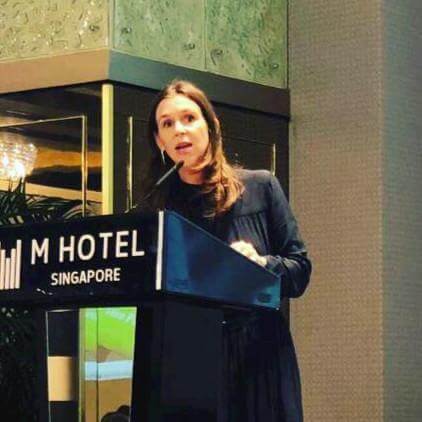Brief Description:
In order to achieve the European Union’s Circular Economy targets, the E-28 need to put a big emphasis into Waste Management solutions, not only to reduce waste to landfill but also to create sustainable waste-to-value industries that help close the loop on our resources.
Bio-Waste accounts for the largest single component of municipal waste and if dealt with properly, besides helping reduce greenhouse gasses in the form of methane from landfills, will also bring gains linked to multiple higher value products, such as natural fertilisers for agriculture, energy production and even protein feed for our aquaculture or farming.
This article focuses on a not yet deeply explored solution, which is to convert waste through insects, the natural decomposers that nature created to close the loop of our organic waste with minimum environmental impact and great resource efficient outcome, and explore the application of this method to an industrial municipal level.
Article:
The European Union, in their new Circular Economy Plan, is setting up new goals to pave the way for a cleaner and more competitive Europe. Like her, the world’s sustainable goals are also moving towards circularity.
Circular Economy aims to redefine growth, moving away from the linear model of “take, make, waste” which has led us to a worldwide natural resources depletion and a huge unprecedented Environmental crisis.
The Circular Economy rests in 3 major principles:
• We need to protect and care for Earth’s resources. Give Nature time to restore itself so that she can help us heal the planet with her magic actions.
• Products, components and materials must be either biodegradable (in the biological cycle) or reusable (in the technical cycle). We must design out waste – that means no garbage.
• We must take the ‘negatives’ out of the system and never ignore those externalities: pollution, contamination, the depletion of resources, and the social impact of our actions.
With this in mind, the EU’s Circular Economy Plan has set ambitious targets to all members that are meant to create circular societies, in where waste becomes a thing of the past, and like the natural world does, we re-use, repair and recycle all of the products we use.
To achieve this, of course, we require innovation in the form of new business models, we need to learn how to eco-design and design for disassembly, we need to come up with new creative markets for recycled materials and alliances for new industrial symbiosis.
At the same time, we need new policies that are better inter-linked and that actively support new research and innovation. (4)
According to the EU Commission, achieving a Circular Economy model would help Europe transition to a more resilient economy, it could create new growth and over 580,000 new jobs per year and cut greenhouse gas emissions by 62 million tons by year 2030. (4)
But not only that, it would also help bring down European Consumption to our planetary boundaries by 2050, which currently is completely off, as worldwide we consume 1,7 planets a year, taking nature’s credit for granted leading ourselves to an obvious disaster.
Waste Recycling rates in Europe have improved greatly in the past few years, however they need to improve in faster rate of progress as currently less than half of the EU Waste generated is been recycled. (2)
The current EU waste legislation includes more than 30 binding targets for the period 2015-2030. One of them is to recycle 50% of household and municipal waste by 2020. It has not been achieved. And it continues with further targets of 55 % by 2025, to 60 % by 2030 and to 65 % by 2035. Another important target is remove recyclable waste from Landfills by 2015, which includes all plastics, metal, glass, cardboard and bio-waste. (2)
Bio-Waste is one of the key waste streams in Europe and holds great potential for achieving a Circular Economy Model and Mitigate Climate Change.
Bio-Waste is defined as biodegradable landscaping waste, food scraps waste from households, restaurants, markets, etc., and comparable waste from food processing plants.
Bio-Waste is the largest single component of municipal waste in the EU, accounting for around 35% of the total waste to landfill, so it is crucial to work on if we aim to comply with the EU’s Waste Management Objectives. (1)
Large Volumes of Bio-waste create tremendous problems, not only because current Food Waste is one of the main challenges when it comes to our global food security (7), but also bio-Waste in landfill creates Methane Emissions, accounting for 7-10% of the global methane emissions which are a large contributor to Climate Change. (6)
Out of all the Bio-Waste, 60% is of it is food waste. (1)
Hence reducing food waste and establishing circular methods of Converting Bio-Waste are key to achieve our Sustainability Goals.
These are priority Goals included in the SDG’s 12: Responsible Consumption and Production.
SGD 12.3 Goal aims to halve by 2030 our food waste per capita at the consumer and retail level. To achieve this goal the EU has already started to implementing Preventing Food Waste policies high in their agenda and has introduce the Fork-To-Table program as part of the European Green New Deal. (8)
In the other hand, SGD 12.5 urges to recirculate waste into meaningful value by treating and recycling products. When it comes to bio-waste, this will help avoid the negative environmental impacts of methane in landfills and to achieve a circular economy model.
For all this, we need to develop industries that offer a treatment option for bio-conversion that are sustainable and follow the Waste Framework Directive (WFD) which clearly estates that “Member States shall take measures to encourage the options that deliver the best overall environmental outcome” (10) However, the WFD practical guide is dated from 10 years ago and is missing some very relevant and relatively innovative solutions, beyond the typical Bio-waste treatment options.
After food waste reduction policies have been implemented, the next step must go focus on implementing waste separation at source and the implementation of the green bin all over Europe. However, still nowadays, even in countries where waste separation has been implemented, a high proportion of bio-waste ends up in landfills or incinerators. (1)
The most common treatment methods applied today, for separately Collected Bio-Waste, are Composting and Anaerobic Digestion (AD). Based on the Life Cycle Analysis from the WFD, Anaerobic Digestion is preferred, above composting, as it recovers both material in the form of fertiliser and energy in the form of Bio-gas. However AD generates quite high atmospheric emissions and bio gas is a fossil fuel that will also generate CO2 emissions to the atmosphere when is used.
As an alternative to these two options and in line with the Circular Economy principles, there is an emerging technology which is able to use natural bio-decomposers as allies, insects like Black Soldier Fly (BSF), to convert bio-waste into different valuable by-products that go beyond the traditional compost and biogas, and that have yet to be fully explored.
Life Cycle Cost analysis studies done on this approach (11) show a tremendous environmental improvement over the two previously mentioned traditional treatment methods, like for example a reduction on direct GHG emissions of 47% if compared to composting and a result in multiple higher value end products like for example, Fishmeal Substitutes out of the BSF larva that can reduce significantly Global Warming Potential (GWP) by 30%.
The truth is, nature has already designed and developed the most efficient decomposers, so it is only a matter of time before successful low impact recycling systems will be developed and applied worldwide industrially.
Several important attributes make BSF technology a very attractive treatment option for biowaste, and is already being applied in different countries to treat different organic waste streams, including municipal waste, manure waste from industrial farming, agricultural waste, etc.
Among the most important characteristics it is worth mention the following: (12)
1. BSF Waste Conversion results into two different end-products: Larva and Residue.
The Larvae is ±40% Protein and ±30% Crude Fat, proven to be a high-value feedstuff for cattle, pig, poultry and fish. Insect Protein has recently been approved by the EU to be fed to poultry and pigs. Out of the BSF larva and BSF fly exoskeleton chitosan can also be extracted, as an alternative very valuable end-product.
The Residue is frass, a valuable by-product similar to compost and other types of animal manure, in-line with the circular economy principles of reintroducing nutrients back to the soil. Insect Frass has recently been incorporated into the EU legislation on animal by-products.
2. Waste reduction of up to 60-80% dry-wet weight has been demonstrated, a great benefit if we consider the significant space reduction and costs implications when treating municipal waste or agricultural waste.
3. Waste to Biomass Conversion can go up to 25%, becoming a very good yield from a business perspective.
4. BSF is proven to be a non-invasive specie, it helps reduce the population of common housefly as its presence and they are not disease vectors.
5. Running and operating a Waste Conversion Facility with BSF doesn’t require sophisticated high-end technology to operate, making it very suitable for also low-income settings.
As per 2021, small BSF farms are common among the temperate and tropical areas, run by small family owned enterprises which are mainly for meal to feed their chickens or their fish. See photo:
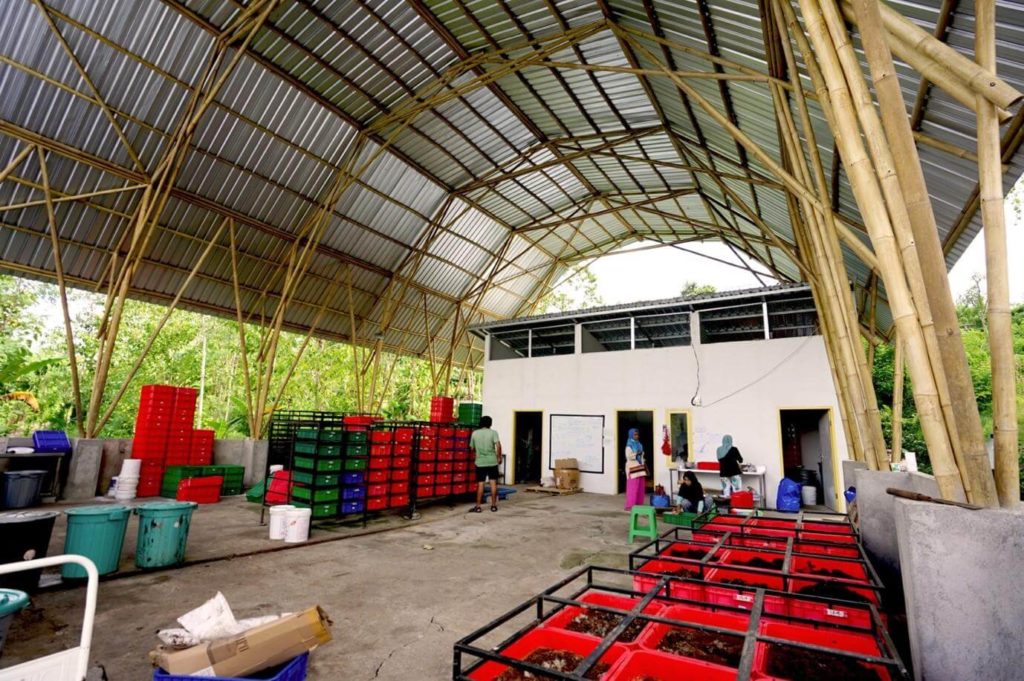
BSF Sengkol. 1 Ton BSF Organic Waste Conversion Facility in Lombok, Indonesia.
Also, a few industrial-scale start-ups all around the world are already operating at large scale, mostly focused on converting agricultural pre-consumer waste, however the challenges to design automatization processes for large volumes of waste conversion are obvious, as they must be economically competitive and easy to operate, in order to scale up the industrialization that the EU and SDGs require.
Another challenge, as per FAO 2013 report “Edible insects: future prospects for food and feed security” clearly states, is to create a legal framework that paves the way for more investment and more research, as currently for example in the EU, insects are considered farmed animals, and feeding them with post-consumer organic waste that includes slaughterhouse or rendering derived products, manure, or catering waste hence municipal waste is prohibited. Also selling whole dry insect larvae is not eligible as feed for animals, however in the US or Canada both these EU Regulations don’t apply, hence commercially viable Organic Waste Conversion facilities are allowed, as long as the larvae’s results on traceability, pathogens and metals pass the requirements.
A successful and worth to mention case study, is the industrial-scale 200ton/day municipal waste facility that Sanergy recently built and operates in Kenia. The engineering design systems for large scale applied to this facility are based and designed on simple technology, for which initial investment and operational costs are low, they don’t require highly skilled professionals to run it, becoming a financially feasible and thus scalable model.
Their Impacts numbers for 2021, after one year only of operations are astonishing:
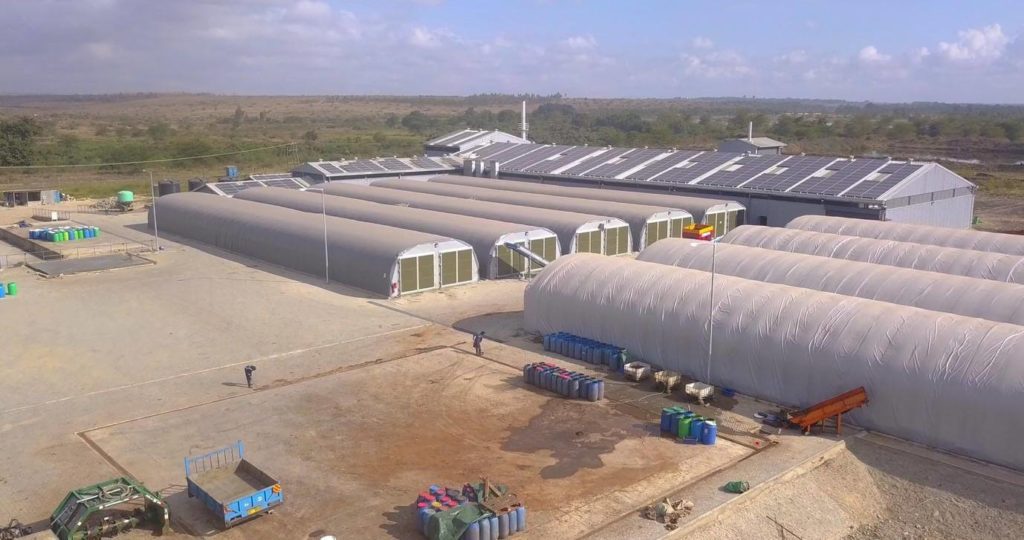
- Organic and sanitation waste safely removed – 43,071mT
- Frass based Organic Compost: Evergrow organic fertilizer produced – 2,151mT
- Frass based Organic Compost: Evergrow organic fertilizer sold – 1,934 mT
- Farmers that used Evergrow Fertilizer see a 30% increase in their yield.
- Whole Dry Larvae product: Kuzapro insect based animal feed produced – 119mT
- Whole Dry Larvae product: Kuzapro insect based animal feed sold – 94mT
- More than 3,000 small, medium and large scale farmers reached with our agricultural inputs to date.
- 500 direct jobs and more than 2,000 indirect jobs created throughout our circular economy model.
- Facility Offset an estimated 50,000 tons of co2 every year.
Given the current European Legislation, (13) such facility like Sanergy’s would not be possible to be implemented in the current European context, and also it would not be economically viable nor attractive for any investor.
We must work towards changing this framework. If we want to speed up our transition towards a low carbon future and a circular economy model, we need to speed up also the development of our circular industry systems and markets, both in the form of investment and research, in order to implement the right legislation to allow for the innovation to succeed.
REFERENCES:
- EEA Report No 04/2020: Bio-waste in Europe — turning challenges into opportunities
- https://www.eea.europa.eu/data-and-maps/indicators/waste-recycling-1/assessment-1
- https://eur-lex.europa.eu/legal-content/EN/TXT/?uri=CELEX:52008DC0811
- https://ec.europa.eu/commission/presscorner/detail/en/IP_14_763
- https://eur-lex.europa.eu/legal-content/EN/TXT/?qid=1583933814386&uri=COM:2020:98:FIN
- https://www.mckinsey.com/business-functions/sustainability/our-insights/curbing-methane-emissions-how-five-industries-can-counter-a-major-climate-threat?cid=other–lkn-mip-mck-lsp-2111-curbing+methane+emissions&sid=618a5d8b70176c39b0675378&linkId=139910510
- Economics of Agriculture 4/2012 : THREATS TO FOOD SECURITY AND COMMON AGRICULTURAL POLICY, Mariola Kwasek
- https://ec.europa.eu/food/horizontal-topics/farm-fork-strategy_es
- EC, 2008, Green Paper on the management of bio-waste in the European Union (COM(2008) 811 final).
- Supporting Environmentally Sound Decisions for Bio-waste Management – A practical guide to LCT and LCA
- https://www.sciencedirect.com/science/article/pii/S0956053X18307293
- Black Soldier Fly Byowaste Processing. A step by Step guide by AEWAG. Sandec: Department of Sanitation, Water and Solid Waste for Development. 2017
- https://ipiff.org/insects-eu-legislation/
Paula Huerta Andre
Board Member Climate Action Alliance,
EU Tech Chamber.


